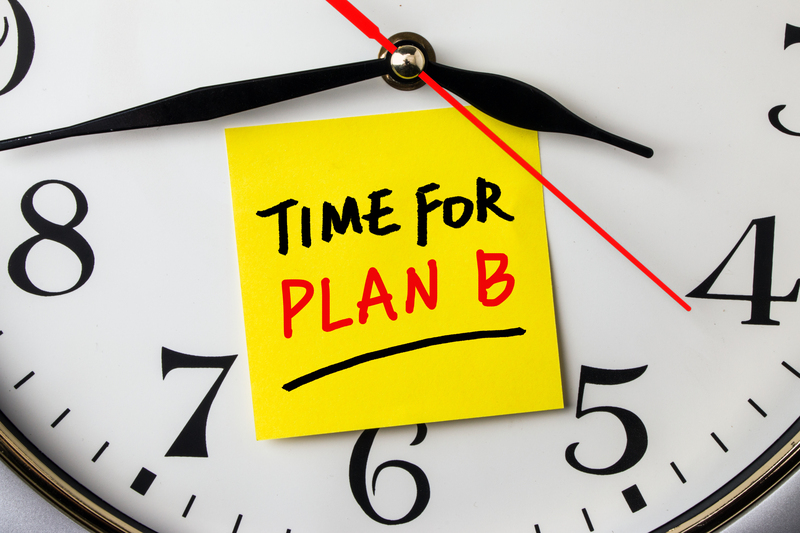Practical tips for the seamless relocation of your bed and mattress
Posted on 29/05/2025
Practical Tips for the Seamless Relocation of Your Bed and Mattress
Moving homes brings several challenges, and one of the most daunting is relocating your bed and mattress. These essential pieces of furniture are not only heavy and bulky but also require special care to prevent damage and maintain hygiene. In this comprehensive guide, discover practical, tried-and-true tips for the seamless relocation of your bed and mattress. Whether you're moving across town or across the country, these steps will help you ensure a safe, efficient, and stress-free process.

Why Proper Bed and Mattress Relocation Matters
Your bed and mattress are vital for your sleep health and overall well-being. Improper handling can lead to:
- Structural damage to your bed frame
- Deterioration of mattress comfort and support
- Increased risk of dust mites and allergens
- Unnecessary expenses from repairs or replacements
With that in mind, let's delve into actionable advice for the smoothest possible bed and mattress moving experience.
Planning Your Bed and Mattress Relocation
1. Evaluate Your Bed and Mattress
Before you begin the moving process, assess the condition of your bed and mattress. Ask yourself:
- Is the bed frame sturdy and in good condition?
- Does the mattress provide sufficient support?
- Are there signs of wear, damage, or infestation?
If your mattress is old or your frame is damaged, moving may be the ideal opportunity to replace them. Otherwise, prepare for a careful move
2. Gather the Right Moving Supplies
Having the appropriate materials simplifies the process. Collect the following:
- Mattress bag or cover for protection from dirt and moisture
- Heavy-duty plastic wrap (for extra protection)
- Moving blankets or old sheets
- Straps or ropes for securing items
- Tool kit (screwdriver, wrench, pliers) for disassembling the bed frame
- Labels and zip bags for small hardware
- Moving dolly or furniture sliders
- Gloves for handling heavy items
Tip: You can usually rent or borrow moving equipment, but always ensure it's suitable for the size and weight of your bed and mattress.
Step-By-Step Process: Moving Your Bed and Mattress
3. Prepare Your Mattress for Relocation
The safe transportation of your mattress requires careful handling:
- Clean your mattress before moving. Vacuum all sides and allow it to air out to eliminate dust and allergens.
- Encase the mattress in a high-quality mattress bag or protective cover. This shields it from dirt, dampness, and accidental tears.
- Use extra plastic wrap or moving blankets for additional cushioning.
- For memory foam or hybrid mattresses, avoid bending or folding as it could damage the internal structure.
- Label the cover with your name and room designation, especially if you are using a moving company.
Bonus Tip: If you have a box spring, wrap and secure it similarly to your mattress.
4. Disassemble the Bed Frame
Transporting a bed frame in one piece can be challenging (if not impossible). Here's how to disassemble it properly:
- Remove all bedding and decorative items.
- Take off the mattress and box spring, setting them aside safely.
- Use the correct tools to unscrew or unbolt the headboard, footboard, side rails, and any support beams.
- If possible, keep nuts, bolts, and smaller parts in a zip bag. Tape the bag to the largest frame piece or store it in a labeled moving box.
- Wrap each frame component in blankets or bubble wrap to prevent scratches or dents.
- Take photos during the process to remember how pieces fit together for reassembly.
Pro Tip: Place all fasteners in a clearly labeled bag, so you're not searching for screws and bolts when you arrive at your new home.
5. Navigating Doorways and Stairs
Measure the dimensions of your mattress and large frame parts before moving through doors and stairways. This prevents scratches, dings, and awkward maneuvering. Follow these tips:
- Remove doors from hinges if space is tight.
- Have a friend or family member help guide you through narrow passages.
- Bend your knees, keep your back straight, and use correct lifting techniques to prevent injury.
- Use furniture sliders or a dolly for heavy frames or oversized mattresses.
Transporting Your Bed and Mattress Safely
6. Loading the Moving Vehicle
The right placement in your moving truck makes a huge difference.
- Place the mattress upright along the side of the truck, secured with straps to prevent shifting or bending.
- Avoid stacking heavy boxes on top of the mattress or frame components.
- Ensure the bed frame parts are placed flat and secure, with padding between them to avoid scratches.
- If moving in a pickup or open trailer, wrap the mattress well and cover with tarps--never let your mattress be exposed to rain or direct sunlight.
Important: A mattress tied to the roof of a car is dangerous and could damage both the mattress and your vehicle. Always opt for a moving van, truck, or professional movers for larger items.
7. Professional Movers vs. DIY
For a seamless bed and mattress relocation, consider whether you need a professional moving service or can manage on your own.
- Professional movers have experience handling bulky furniture and offer insurance for valuables.
- DIY relocation saves money but requires more effort, proper equipment, and careful planning.
Either way, alert movers to any special requirements. For adjustable beds, certain brands or mechanisms may require special handling; check the manufacturer's instructions for moving guidance.
Reassembling Your Bed and Mattress in Your New Home
8. Unpacking Safely
- Inspect the mattress and frame for any signs of damage during the move.
- Carefully remove all protective wrappings and dispose of them responsibly.
- Clean and vacuum the area where you'll set up your bed to minimize dust and allergens.
9. Reassembling the Bed Frame
To ensure stability and comfort for your mattress:
- Use the photos you took during disassembly for reference.
- Lay out all frame parts and hardware, checking nothing is missing or damaged.
- Tighten all screws and bolts firmly, but avoid overtightening which may damage wooden parts.
- Level the frame to avoid squeaks and ensure proper mattress support.
10. Air Out Your Mattress
Allow your mattress to breathe for a few hours before adding bedding. This helps remove any odors from the move and allows the materials to decompress (especially for memory foam or latex mattresses).
11. Final Setup
- Place the mattress on the reassembled frame.
- Add clean bedding and pillows.
- Test the setup for stability and comfort before your first night's sleep.
Tip: Make sure to recycle mattress covers and packing materials where possible to minimize environmental impact.
Extra Tips for a Smooth Bed & Mattress Move
Mattress Moving Best Practices
- Never drag your mattress across the floor--always lift to avoid tears or deformation.
- If storing your mattress, keep it flat and elevated off the floor to maintain shape and prevent mold.
- Use mattress protectors in your new home to guard against stains and dust mites.
Children's Beds and Special Mattresses
- For bunk beds or platform beds, consult the manufacturer's manual for disassembly instructions.
- Memory foam and latex mattresses may be heavier and more challenging to move, so plan accordingly.
- For adjustable or mechanical beds, unplug all electronics and secure any moving parts.
When to Consider a Professional Mattress Moving Service
- If your mattress is extremely large (California King or custom size)
- If you have physical limitations or lack help
- If your route includes narrow stairs or difficult building access
Professional mattress movers possess specialized equipment and minimize the risk of injury or damage.

Common Mistakes to Avoid
- Not measuring doorways and hallways before attempting to move a bed or mattress
- Packing the bed frame without labeling parts or hardware
- Using flimsy covers that could tear, exposing the mattress to dirt
- Ignoring manufacturer instructions, especially for specialty mattresses
- Improper lifting technique, risking injury
- Leaving a mattress exposed to the elements during the move
Avoiding these common errors will help you achieve a truly seamless bed and mattress relocation.
Conclusion: Sleep Worry-Free After Your Move
Moving your bed and mattress doesn't have to be stressful. By following these detailed practical tips for seamless relocation of your bed and mattress, you'll protect your investment, your health, and your peace of mind. Gather the right supplies, take the time to prep and protect your items, and don't hesitate to seek expert help if needed. With proper planning and execution, you'll be able to enjoy a restful night's sleep in your new home without hassle or worry.
Ready to make your next move as comfortable as possible? Bookmark this guide and use it as your step-by-step checklist for a perfect, stress-free bed and mattress move every time!



